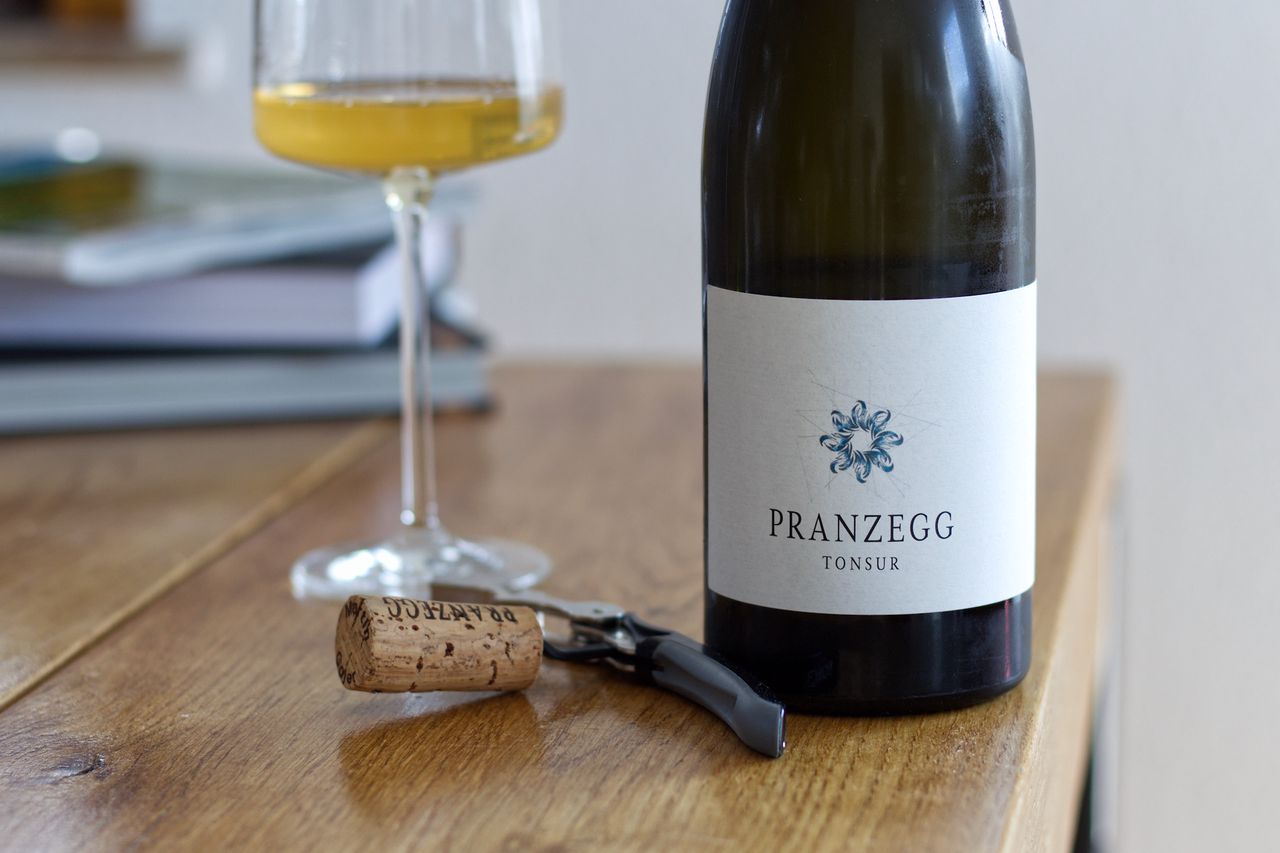Pranzegg - Tonsur 2019
We are drinking wine from South Tyrol again: from the Pranzegg Winery a Tonsur 2019.

We’ll just stay another week in South Tyrol. Martin Gojer makes natural wines here near Bolzano at the Pranzegg winery. He took over 1997 but kept selling the grapes in the first year. However he wanted to change that and start making wine in his own cellar. Since 2009, he has been responsible for the wines at the winery, whose vines grow on about three to four hectares of steep slopes around the Bolzano Valley. It goes without saying that the work in the vineyard and cellar is ecological and minimal, the grapes are fermented spontaneously, neither filtered nor fined, and even sulfur is used only minimally. In addition, Martin Gojer also likes to leave the white wines on the mash for some time. The grapes for the Tonsur, which we have from 2019 today in the glass, grow in the mixed set at 700 meters altitude on the Bolzano local mountain Ritten. Mountain wine. In the mix is Müller-Thurgau, which makes up a large part of the vines, mixed with Pinot Blanc, Silvaner and Chardonnay. A mixture that, at first glance, keeps expectations low, since Müller-Thurgau, in my mind (and I guarantee in the minds of many others), is more synonymous with inconsequential mass wines than with quality. But breaking out of common expectations is, if it is well done, often something natural wine excells at. So I am optimistic. The grapes for the Tonsur are fermented spontaneously, as mentioned earlier, and then half are left on the skins for fermentation while the other half are pressed and fermented in tonneaux. The wine then remains on the fine lees until bottling.
The nose calls out Natural loudly after pouring. Fermented apple skins, aromas of lactic acid fermentation, spice and a bit of yeast we smell. No fruit. Also on the tongue it reminds us of lactic fermentation with some tannin from the skin contact. This reads quite strenuous at first, but somehow the wine is extremely charming, soft and harmonious at the same time. In addition, it is reminiscent of lemon peel in later sips and something like fruit remains on the tip of the tongue. It reminds one of sour apple or peach rings, but really only in the aftertaste. While the wine is still in the mouth, there is nothing in this direction. And then comes the salivation and salt on the lips. I like that.
Towards later, the citrus also arrives on the nose. The wine is certainly closer in mouthfeel to an orange than a classic white wine. The apple and peach rings then disappear again and the better half thinks it’s just somewhere between lemon tart and sweet shandy. The tannin remains, as does the drinkability.
Spice comes over night. The little fruit that was present has disappeared again. Instead, there is now herbal tea, more softness on the tongue and an enormous length. Unfortunately, it loses some of its juiciness. However, this does not detract from the fun and I think that the Tonsur is quite a candidate for the first contact with white wines with mash fermentation. I can imagine that it opens doors of taste. However, one may need to refrain from saying how much Müller is in it until after the tasting. Then it might tear down yet another prejudice.